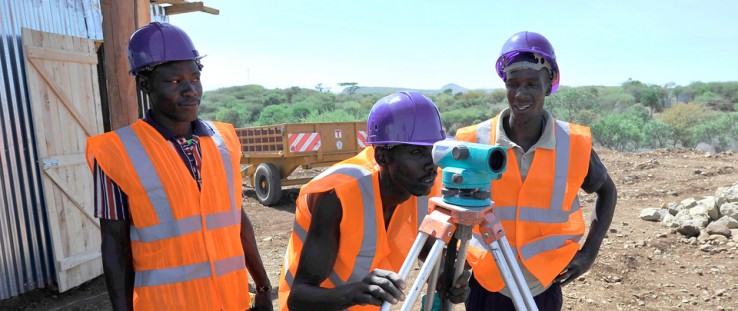 Workers survey a biomass site in Kenya.
Alex Kamweru, USAID
Workers survey a biomass site in Kenya.
Alex Kamweru, USAID
 Workers survey a biomass site in Kenya.
Alex Kamweru, USAID
Workers survey a biomass site in Kenya.
Alex Kamweru, USAID
At the August 2014 U.S.-Africa Leaders Summit hosted by President Barack Obama, Power Africa 2.0 was born. As he had done in June 2013 when he launched Power Africa 1.0, the president called on members of his administration, officials representing American and African private sectors and government leaders in African countries to do more to help dramatically increase the amount of electricity available to millions of sub-Saharan Africans.
Based on the initial success of the initiative, a new challenge was put forward by the president: the U.S. Government, in coordination with multilateral organizations, the private sector and African governments, is now aiming to triple the initial set of goals associated with Power Africa. Power Africa now aims to add 30,000 megawatts and 60 million connections throughout sub-Saharan Africa.
An even more ambitious goal for Power Africa is an exciting prospect for everyone involved, as we want to set our goals as high as possible. As President Obama himself said in August, “I will tell you, the response has exceeded our projections. It has been overwhelming.”
Since the president’s June 2013 speech, members of our interagency team have engaged in an ongoing learning process in part because Power Africa itself represents a new model of development. Our approach is based on effective partnerships that link public and private sector goals and resources, and connect investors and entrepreneurs to business opportunities in Africa. Our partnerships are private sector driven, and engage multiple U.S. Government agencies, African governments, and public and private sector actors with the aim of addressing the electricity access challenges in sub-Saharan Africa. We have aligned efforts with other donors by taking a practical approach. Our teams in the field reached agreements with their counterparts in host countries and then fed these locally developed partnerships up to headquarters, where we then established our own corporate level goals with entities such as the World Bank and the African Development Bank.
A nighttime satellite map of Africa shows only specks of light concentrated along the periphery of the African continent. But the satellite images for just about anywhere else—the United States, Europe, Asia—show blazing light at night. The difference: electricity; plentiful in some places, woefully inadequate in others. In sub-Saharan Africa, two-thirds of the population—or around 600 million people—lack access to reliable electricity. And it is worse in rural areas, where as many as 80 percent of residents have no reliable and safe source of power.
In real-world terms, that means school children must do homework by the light of kerosene lamps, businesses without reliable Internet connections cannot grow their customer base beyond their country borders, and health centers must find the cash to fuel diesel-powered generators when electricity cuts off.
Electricity availability and the pace of expanding access to it does not match the continent’s and its people’s desire to reach their own goals as governments, markets and communities. Estimates are that it will take at least $300 billion to achieve universal electricity access in the next 15 years. That is why private and public sector partners—along with the U.S. and African governments—are integral to ensuring Power Africa reaches its objectives by 2030.
To assist in achieving these shared goals, we must work together to deliver and expand access, whether it be on the existing electricity grid, building and expanding the grid, or delivering solutions in areas where there is no grid access at all. And so, not only is Power Africa working with globally recognized names like General Electric and SunEdison, we are also working with lesser known entrepreneurs including those who are harnessing geothermal power in Ethiopia, and those who are expected to deploy off-grid technologies to help power a Nairobi school later this year. Together, we can use every kind of expertise, talent and financial muscle to advance Africa’s substantial wind, solar, hydropower, biomass, natural gas and geothermal generation opportunities.
Power Africa has already contributed to the financial close or is involved in the planning stages for transactions amounting to roughly 80 percent of the initial goal of increasing power by 10,000 megawatts. For example, we are working with the Ethiopian Government and a developer to help bring to completion the largest geothermal plant in East Africa. When completed, the 1,000 megawatt Corbetti plant will provide much needed electricity for the citizens, businesses and Government of Ethiopia. Power Africa’s embedded adviser within the Ethiopian Government functioned as a linchpin, working directly with the developer, as well as the Ethiopian and U.S. Governments to ensure that all of the various obstacles could be overcome.
Power Africa’s success on this transaction goes beyond the immediate impact of the Corbetti project; it is leading to advancements and breakthroughs for entirely different energy transactions. Corbetti is the first privately owned energy project in Ethiopia’s history and, as a result, we are now seeing investors looking at other potential opportunities in the country’s energy sector.
And in Kenya, we are working with an American company and the host government to push forward a small 10 megawatt biomass plant that uses mesquite wood, an invasive plant common to that area of the country, as a source for the biomass. The community receives money from the power plant for selling the wood and the process itself will result in cleaner, more sustainable and effective electricity access for the surrounding area. Power Africa is now asking the company, Cummins Cogeneration, to look at Liberia to see if the biomass plant can be replicated there.
This past year, we also launched Beyond the Grid, a new sub-initiative of Power Africa designed to increase access to cleaner, more reliable and efficient electricity in those areas that are not even part of any master plan for grid expansion for the next decade. One of our Beyond the Grid partners is Solar Sister, which creates a sales force of women entrepreneurs who sell portable solar lamps, mobile phone chargers and fuel-efficient cooks stoves in their communities, all while educating men, women and children about the real-life benefits of clean and affordable energy solutions.
Most importantly, Power Africa is not effective without its connected effort, Trade Africa, a partnership between the United States and sub-Saharan African countries to increase trade within Africa and expand trade and economic ties among Africa, the United States and other global markets. An emerging African middle class is creating goods and services that are ready to export—businesses just need the avenues to make those transactions happen. That is where Trade Africa comes in, helping countries create a business-friendly regulatory environment that will allow small enterprises to expand and thrive.
As President Obama said at the U.S.-African Leaders Summit, “Our entire trade with all of Africa is still only about equal to our trade with Brazil—one country. Of all the goods we export to the world, only about 1 percent goes to sub-Saharan Africa. So we’ve got a lot of work to do. We have to do better—much better. I want Africans buying more American products. I want Americans buying more African products.”
When people ask me what success looks like with respect to Power Africa, my answer is a simple one: in the years to come, for the nighttime map of Africa to be as vibrant as the one for North America or Europe. Most importantly, that moment will mean African nations and their citizens will be better equipped to secure their own future and have an easier time exchanging their vibrant ideas, innovative products and rich cultures with the world.
In this issue of FrontLines, you’ll read about only a small sample of the work we are doing with both Power Africa and Trade Africa. We are proud of these efforts to accelerate the progress of power and trade on a continent that holds such enormous potential and is set to reap significant rewards from both, for its citizens and for an even brighter future.







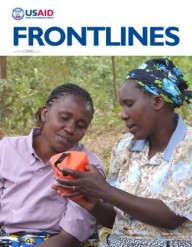

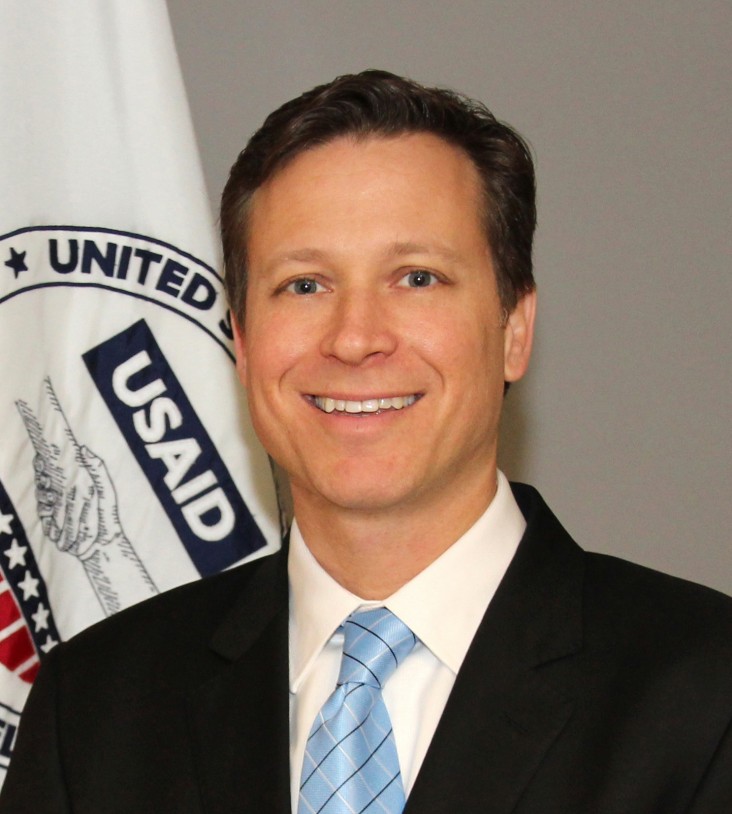
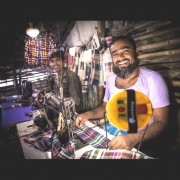
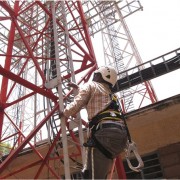
Comment
Make a general inquiry or suggest an improvement.